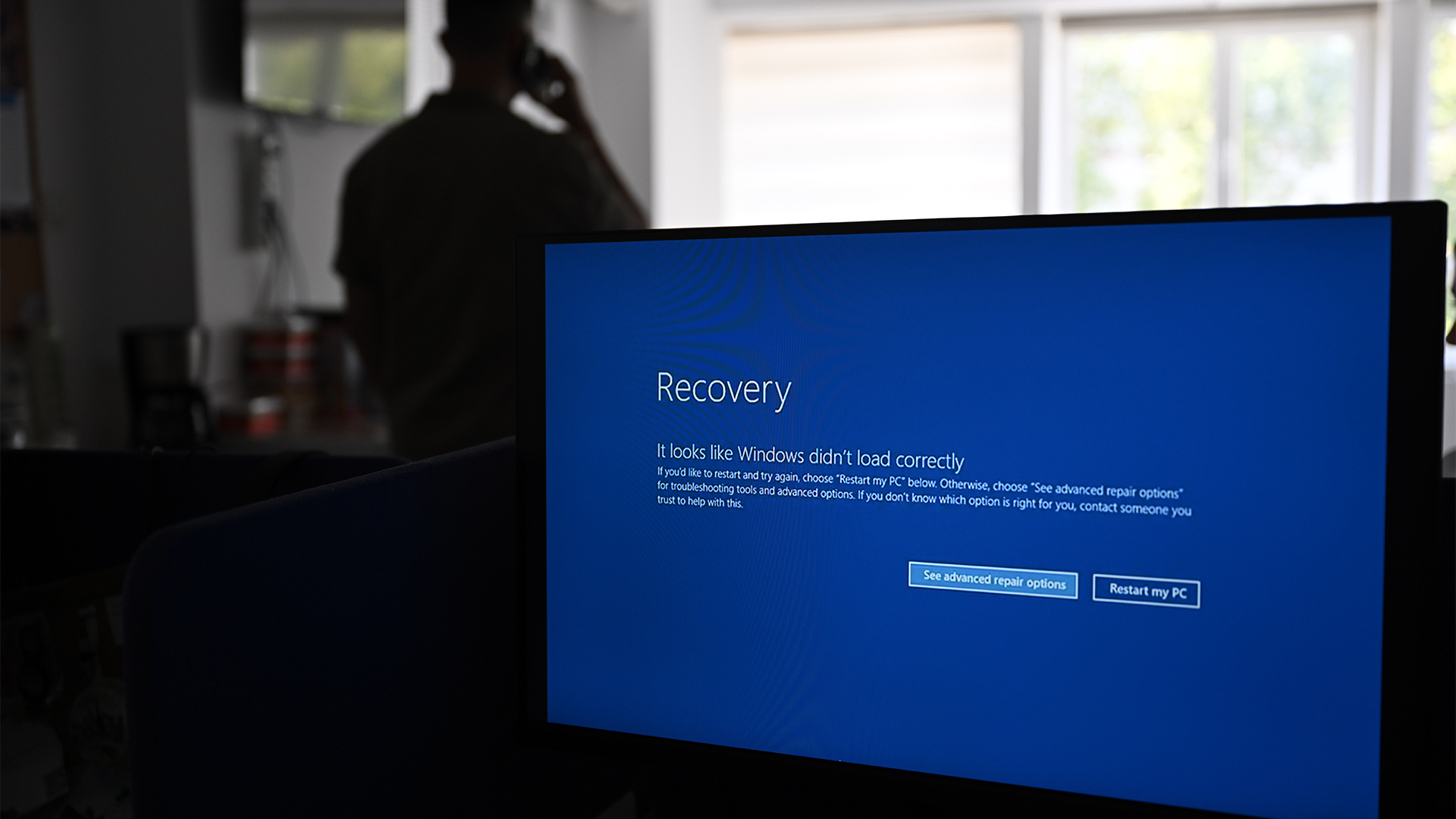Agile development is fading in popularity at large enterprises - and developer burnout is a key factor
Firms employing agile development practices are ‘having difficulty adapting’ in a new world of developer burnout, AI and more, a new report claims


Agile development methodology is facing significant obstacles as the tech industry goes through a wave of changes including developer burnout, shifting working environments, and the rise of AI.
Agile is a software development methodology first formulated back in 2001 which aims to deliver software faster by breaking monolith projects up into smaller elements. These can then be completed in ‘sprints’ of weeks or months which are monitored at daily stand-up meetings to check on progress.
The idea is that developers and business execs should work together daily on projects and that changes should be welcomed even at a late stage in a project.
Rapid iterations – and, if necessary, failures – are the best way to get projects finished, according to this approach.
“Working software is the primary measure of progress,” is one of the 12 principles of the Manifesto for Agile Software development. All of this stands in stark contrast to the ‘waterfall’ approach which was dominant previously.
This values lots of up-front planning and projects delivered in a systematic fashion - which critics argue leaves less room for adapting to change - and a greater chance of total failure.
But now a ‘State of Agile’ survey from software development company Digital.ai shows that while agile has many fans, particularly in smaller firms, it is struggling to make an impact in larger organizations.
Sign up today and you will receive a free copy of our Future Focus 2025 report - the leading guidance on AI, cybersecurity and other IT challenges as per 700+ senior executives
“From AI to developer burnout, hybrid work environments and unrelenting demand, change is happening in every organization in every industry. At this moment in time, it feels like agile is having difficulty adapting,” the report said.
The study found that while smaller organizations continue to consider agile as a powerful productivity and organizational framework that exhibits “obvious benefits”, medium-sized and larger companies are less satisfied with what agile can do for them, and are more likely to pick a software development strategy that uses a number of different frameworks.
Use of agile development is still widespread
According to the survey of 788 tech workers, 69% of respondents said their IT, software development, and delivery teams use agile, as do nearly half of engineering, product, and R&D teams (48%), along with 28% of business operations and 20% of marketing teams.
Roughly 44% of respondents said enterprise agile works very or somewhat well for their organizations. Smaller companies were more likely to say they were happy (52%) compared to 43% of larger businesses.
Over two thirds (71%) of respondents said they were using agile in their software development lifecycle, while 42% said their organizations use a hybrid model that includes agile, DevOps, and others.
“The larger the organization, the more likely it is to use a hybrid model,” the report said, noting that bigger teams are also more likely to still use waterfall.
The Digital.ai report said the most successful agile implementations are in small companies. Three quarters of small companies (compared to 62% of large companies) said at least 50% of their applications were delivered on time and ‘with quality’.
RELATED RESOURCE

Sharpen your AI expertise with this guide
DOWNLOAD NOW
But while in last year’s survey 72% of respondents said they were satisfied with agile practices in their company, this year’s study found that has dropped to 59%.
The biggest reason for this is that nearly half of survey respondents (47%) blamed a generalized resistance to organizational change or culture clash – up seven points from 2022.
They also blamed a lack of leadership participation and a failure of management support, and while a third said that business teams did not understand what agile did or could do.
Respondents who were unhappy with agile adoption rates blamed “too many mixed systems” in their companies, while second on the list for blame was siloed teams causing a culture clash and inconsistent use of agile.
Agile has been gradually spreading beyond software development, particularly as a result of demand for broader digital transformation projects which are viewed by CIOs as a way of injecting a little of the excitement and energy needed to crack open legacy systems and find new value.
But for organizations wanting to move agile from team level to company-wide, there are still a number of problems ahead.
One-in-three blamed leadership figures “not understanding and putting roadblocks up, either knowingly or unknowingly”, closely followed by “teams not empowered to be self-organized and/or self-sufficient”.
People in medium and large companies are more likely than those in small ones to say their challenge is that everything is siloed.
“What’s clear from the data is that, when agile works, it works – there are concrete benefits for the organizations who have gotten it right,” said Derek Holt, Digital.ai’s CEO.
“Agile still provides us with the best opportunity to manage these transitions and drive software delivery toward maximum business value.”
Steve Ranger is an award-winning reporter and editor who writes about technology and business. Previously he was the editorial director at ZDNET and the editor of silicon.com.
-
 We need more academic thinking in tech
We need more academic thinking in techOpinion Greater focus on theoretical thinking and disciplines like ethical AI are needed to rein in big tech's worst tendencies
-
 Infosys co-founder Narayana Murthy called for a 70 hour week last year — now he says that’s not enough
Infosys co-founder Narayana Murthy called for a 70 hour week last year — now he says that’s not enoughNews Murthy thinks longer hours akin to China’s '996' approach are the key to success
-
 AI is transforming Agile development practices as teams battle mounting delivery cycle pressure and ROI concerns
AI is transforming Agile development practices as teams battle mounting delivery cycle pressure and ROI concernsNews The influx of AI tools is helping reshape Agile development at a critical juncture for the methodology
-
 Java developers are facing serious productivity issues: Staff turnover, lengthy redeploy times, and a lack of resources are hampering efficiency – but firms are banking on AI tools to plug the gaps
Java developers are facing serious productivity issues: Staff turnover, lengthy redeploy times, and a lack of resources are hampering efficiency – but firms are banking on AI tools to plug the gapsNews Java developers are encountering significant productivity barriers, according to new research, prompting businesses to take drastic measures to boost efficiency.
-
 Why the CrowdStrike outage was a wakeup call for developer teams
Why the CrowdStrike outage was a wakeup call for developer teamsNews The CrowdStrike outage in 2024 has prompted wholesale changes to software testing and development lifecycle practices, according to new research.
-
 Why are so many AI projects destined for failure? Inexperienced staff, poor planning, and a shoehorned approach to agile development are all stifling innovation
Why are so many AI projects destined for failure? Inexperienced staff, poor planning, and a shoehorned approach to agile development are all stifling innovationWhile agile development practices work well in many circumstances, devs are encountering serious problems applying the methodology in AI projects
-
 ‘It’s time to question agile’s cult following’: Doubts cast on method’s future, with 65% of projects more likely to fail
‘It’s time to question agile’s cult following’: Doubts cast on method’s future, with 65% of projects more likely to failNews Agile development methods just aren’t delivering, and it's time devs acknowledged its failings
-
 Agile development has a security problem - and developer ‘champions’ could be the key to ensuring safer software
Agile development has a security problem - and developer ‘champions’ could be the key to ensuring safer softwareAnalysis Security considerations can be an afterthought in agile development, but there are ways to address the issue and prevent disastrous consequences
-
 What is platform engineering and will it see the end of DevSecOps?
What is platform engineering and will it see the end of DevSecOps?In-depth Platform engineering is not just the latest industry buzzword but could represent a profound change in how software is developed and governed
-
 The ultimate guide to getting your killer app off the ground
The ultimate guide to getting your killer app off the groundIndustry Insight When building software, the process of designing, testing, prototyping, and perfecting your project is never ending
